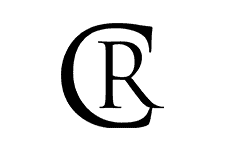China Since 1898
A timeline of China Since 1898.
1898: Emperor Kuang-hsu (1871-1908) of the Qing Dynasty initiates Hundred Days Reform program as reformist movements spread amid foreign interference in China; Empress Dowager Tzu-hsi (1835-1908) has Kuang-hsu arrested and rules until her death.
1900: Anti-foreigner uprising (“Boxer Rebellion”) sweeps China, prompting reprisals and expedition by the Eight-Nation Alliance (Japan, Russia, Britain, France, United States, Germany, Austria-Hungary and Italy) to protect foreign interests; Sun Yat-sen (1866-1925) becomes leader of the Revive China Society and, in 1905, of the United League.
1911: Uprisings with support of military rebels begin in Wuchang and spread widely, culminating in the 1911 Revolution.
1912: Last Qing Emperor of China, Pu Yi (1906-67), abdicates, ending over two thousand years of imperial rule; nationalists proclaim Republic of China in Nanjing; Sun Yat-sen becomes president, and establishes the Kuomintang nationalist party; Sun is pushed out and replaced by military leader Yuan Shikai (1859-1916) as president in Beijing.
1915: Japan imposes Twenty-One Demands on Yuan Shikai.
1916: Revolt of the Generals halts Yuan Shikai’s attempt to re-establish imperial rule.
1917: China declares war on Germany, entering World War I; Sun Yat-sen establishes rival government in Guangzhou, Guangdong; Bolshevik Revolution occurs in Russia, inspires Chinese revolutionaries.
1919: May Fourth Movement student protests occur in protest of the Versailles Peace Conference decision to grant German concessions in Shandong to Japan rather than restoring Chinese sovereignty.
1921: Chinese Communist Party is formed in Shanghai as an outgrowth of May Fourth Movement; Mao Zedong (1893-1976) becomes secretary of Communist Party branch in native Hunan.
1924: Kuomintang first national congress seeks cooperation with Communists and Soviet Union for unification of China.
1925: China experiences outbreaks of anti-foreign strikes and political unrest; Chiang Kai-shek (1887-1975), chief of staff of National Revolutionary Army, succeeds Sun Yat-sen as Kuomintang leader.
1926: Chiang Kai-shek launches Northern Expedition against warlords and unifies wide parts of China.
1927: Chiang Kai-shek crushes Communists and consolidates control; Communists form Red Army (later called the People’s Liberation Army).
1928: Chiang Kai-shek establishes Nationalist government in Nanjing.
1929-30: Famine in northern China kills 5-10 million.
1930: Nationalists launch Extermination Campaigns against Communists.
1931: Mao Zedong establishes Chinese Soviet Republic in Ruijin.
1934: Fifth Extermination Campaign drives Communists from southern China; Communist army undertakes the Long March to Yenan with Mao Zedong emerging as Communist leader.
1937: Japan invades China, capturing Beijing, Shanghai and Nanjing; Nationalists and Communists form temporary united front; Mao Zedong’s party leadership confirmed; Soviet Union aids Chinese resistance.
1941-1945: China joins World War II alliance with United States and Britain against Japan; Chiang Kai-shek attends Cairo Conference with U.S. President Franklin D. Roosevelt and British Prime Minister Winston Churchill; war leaves Nationalists beleaguered while Communists make significant gains in membership and influence.
1945: Mao Zedong elected chairman of the Communist Party and its Politburo; China signs United Nations Charter.
1946: Nationalists and Communists fail to agree on coalition rule and civil war resumes; Communists declare “war of liberation.”
1949: Communists defeat Nationalists and Mao Zedong proclaims the establishment of the People’s Republic of China on October 1 in Beijing; Mao declares intention of creating socialist society and promoting world communism; Chiang Kai-shek and Nationalists flee to island of Taiwan declaring continuity of Republic of China; United States supports Taiwan government and pledges to work towards Mao Zedong’s downfall.
1950: China enters Korean War, supporting Communist invasion of south; a U.S.-led United Nations force repulses invaders; Chinese troops occupy Tibet; China signs Treaty of Friendship with Soviet Union.
1953: China launches first Five-Year Plan, intended to spur economic growth using the Soviet model of centralized planning, state ownership and collective farms.
1954: United States signs Mutual Defense Treaty with Taiwan.
1956: Mao Zedong launches Hundred Flowers Campaign to encourage criticism of Communist policies.
1958: China begins Great Leap Forward program aimed at rapid industrialization; economic disruption triggers widespread famine, killing as many as 30 million.
1959: Chinese forces crush uprising in Tibet; the Dalai Lama flees to India.
1960: Ideological and strategic tensions escalate between China and Soviet Union.
1962: Clashes over disputed Himalayan border occur between China and India; China increases military aid to North Vietnam.
1964: China detonates a nuclear device, signaling China’s rise as a global power.
1966: Mao Zedong launches Great Proletarian Cultural Revolution aimed at reviving revolutionary spirit and cleansing party of ideological enemies; Deng Xiaoping (1904-97), a pragmatic economic reformer, is stripped of party leadership positions.
1966: United States increases military forces in Vietnam to 400,000 after U.S. President Lyndon Johnson cites need to stop Chinese Communist aggression in Asia.
1967: China experiences widespread violence and economic disruption amid the Cultural Revolution.
1968: China detonates a hydrogen device.
1969: Chinese and Soviet forces engage in border clashes.
1970: China withdraws war support personnel from North Vietnam after Hanoi refuses to cut relations with the Soviet Union.
1971: United Nations recognizes People’s Republic of China, which becomes one of the five permanent members of the Security Council; Taiwan is expelled from the UN.
1972: U.S. President Richard M. Nixon makes historic eight-day visit to China, paving the way for official U.S. recognition of the People’s Republic of China.
1974: Ailing longtime Premier Zhou Enlai (1898-1976) designates Deng Xiaoping as successor; Deng returns to politics as first vice premier.
1976: Zhou Enlai dies; Gang of Four, a militant party faction that includes Mao Zedong’s wife Jiang Qing, targets Deng Xiaoping as counterrevolutionary; Mao Zedong dies; Hua Guofeng (1921-2008) takes over as chairman (position renamed general secretary in 1982).
1978: Deng Xiaopeng (1904-97) becomes de facto leader; launches Open Door Policy and market reforms.
1979: United States and People’s Republic of China establish diplomatic relations; United States commits to military and other support for Taiwan; China launches punitive invasion of Vietnam following Vietnam’s incursion into Cambodia.
1980: Hu Yaobang (1915-89) becomes general secretary; China establishes special economic zones to attract foreign direct investment as part of free market reforms; People’s Republic of China becomes a member of the International Monetary Fund and World Bank.
1981: Members of Gang of Four are tried and given long sentences for usurping power and persecuting thousands; Communist Party denounces Cultural Revolution.
1984: China designates fourteen coastal cities open for foreign direct investment and trade.
1987: Zhao Ziyang (1919-2005) becomes general secretary.
1988 Regulations are enacted for establishment of private businesses and corporations.
1989: Government violently suppresses democracy movement in Tiananmen Square in Beijing; Zhao Ziyang is dismissed and replaced as general secretary by Jiang Zemin (1926-); the Dalai Lama is awarded the Nobel Peace Prize for “for his consistent resistance to the use of violence in his people’s struggle to regain their liberty.”
1990: Shanghai and Shenzhen stock markets open.
1992: Deng Xiaoping calls for more rapid economic growth and reform during visit to southern China; Communist Party endorses “socialist market economy,” calling market economy compatible with socialism; China accedes to the Nuclear Non-Proliferation Treaty.
1994: All regions of China are opened for foreign direct investment.
1996: China mounts war games in Taiwan Strait on eve of presidential elections in Taiwan; United States sends two carrier battle groups into the Strait.
1997: Britain returns Hong Kong to Chinese rule.
1999: U.S. forces bomb Chinese embassy in Belgrade during NATO raid on Serbia during Balkans conflict, triggering diplomatic tensions and anti-American protests in China; Portugal returns Macao to Chinese sovereignty.
2001: China enters World Trade Organization.
2002: Hu Jintao (1942-) becomes general secretary.
2003: China launches its first manned space flight, Shenzhou 5.
2006 Three Gorges Dam, the world’s largest hydropower project, is completed.
2007: China carries out a missile test in space.
2008: Beijing hosts Summer Olympic Games.
2009: Leaders of China and Taiwan exchange messages for the first time in six decades.
2010: China and the Association of Southeast Asian Nations (ASEAN) create a free trade area; China surpasses Japan as the world’s second largest economy after the United States; Chinese literary critic and human rights activist Liu Xiaobo is awarded the Nobel Peace Prize for his “long and non-violent struggle for fundamental human rights.”
2012: Xi Jinping (1953-) becomes general secretary; China opens world’s longest high-speed rail route linking Beijing and Guangzhou; influential Chongqing party chief Bo Xilai is expelled from party amid murder and corruption scandal; China experiences increased diplomatic tensions with the Philippines and Vietnam over rights in the South China Sea.
2013: Diplomatic tensions escalate between China and Japan over disputed islands in the East China Sea.


